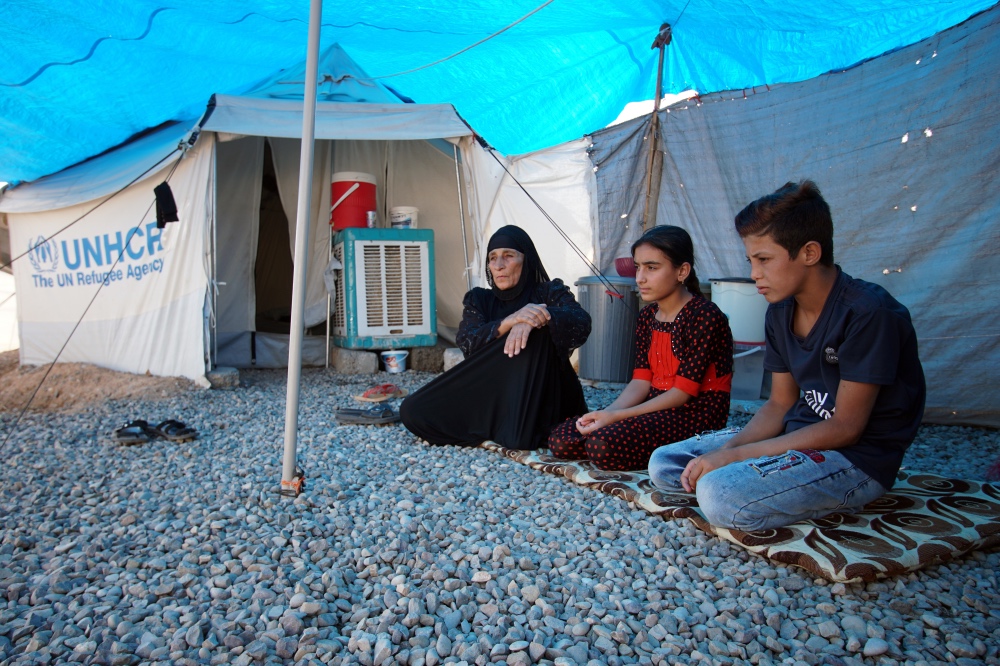London
Thomson Reuters Foundation
Conflict and disasters forced nearly 11 million people from their homes in the first half of this year, a global monitoring group said on Thursday, warning mass displacement was becoming “the norm”.
Natural disasters such as cyclones and floods caused seven million people to leave their homes, while a further 3.8 million fled conflict and violence, said the Internal Displacement Monitoring Centre.

Mariam (Om Salih), a displaced Iraqi woman, who returns to camp after trying to go home and find the conditions in their towns unbearable, with lack of services and destroyed buildings, sits with her sons outside their tent at Hassan Sham camp, east of Mosul, Iraq, 29th July. PICTURE: Reuters/Abdullah Rashid
Syria, the Democratic Republic of Congo, Ethiopia and Yemen suffered the highest levels of displacement due to conflict.
“These numbers are…at a concerningly high level and the trend overall is that they are not going down,” Bina Desai, the IDMC’s head of policy and research, told the Thomson Reuters Foundation.
“The number of people exposed to displacement risk is increasing as more people live in poverty or insecurity as well as in areas at risk of flooding or other disasters.”
A growing number of people face more than one such threat, from poverty or environmental degradation to political instability, said Desai.
Countries already battered by conflict or disaster are suffering high levels of new displacement, said the IDMC, a Geneva-based monitoring and analysis organisation set up by the Norwegian Refugee Council.
Natural climate patterns usually cause a rise in extreme weather events towards the end of the year, meaning the total displaced by disaster is expected to grow to about 22 million in 2019, said the IDMC.
However, it pointed out that in some cases, high levels of displacement represent success.
Cyclone Fani caused more than 3.4 million new displacements in India and Bangladesh, which saw a huge planned evacuation ahead of the storm. Many of those forced to flee suffered losses but survived and were ultimately able to return home.
The response to the cyclone underscored the need for governments to take early action to protect communities and make them more resilient to disasters, the report said.
“In terms of risk reduction and longer-term comprehensive approaches towards addressing conflict displacement, there are opportunities now because a number of countries have started to recognise the issue as a development issue,” said Desai.
“The challenge now on the international community and the donor countries is to really support those opportunities … rather than just perpetuating a reactive humanitarian system.”





